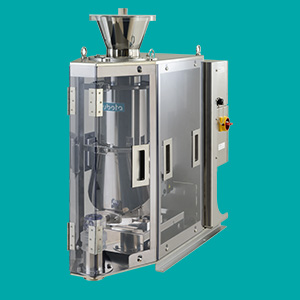Case Studies
Key Points for Reliably Improving the Precision of Additive Dosing
Industry:
Resin manufacture
Department:
Research and Development

Summary of the solution
Many manufacturers in the industry used Kubota’s micro feeders.
Revolutionary and unique design enabled precise dosing of even hard-to- handle materials.
In addition to the feeders’ compatibility with multiple hard-to-handle materials, their compact size and ease of relocation made it possible for a single feeder to be used for additives and other low-dose materials on multiple production lines.
After performing tests with actual materials and additives, the manufacturer established that the Kubota feeder would enable it to achieve its precision target.
Solution
Feeder Used by Performance Resin Manufacturers Enables Accurate Dosing of Tricky Materials
One day at an industry meet and greet event the employee happened to obtain some useful information from a manufacturer of performance resins.
“I was informed that many manufacturers in the industry used Kubota’s micro feeders. As soon as I got back to the office, I contacted Kubota, who told me about the NX-T12 series of micro feeders,” says the employee.
The Kubota representative he talked to told him that Kubota feeders have a highly effective anti-bridging design. In other words, they can be used with not only powdered and pelletized resins, but also with materials having a wide variety of properties and forms, including hard-to-handle materials like antioxidants. He also learned that the feeders’ compact size made them easily relocatable, so when used for low-dose materials like additives, a single feeder was able to cover other production lines.
The feeders’ unique, revolutionary design, featuring an inverse-tapered hopper and diagonal agitator, enables them to dispense materials consistently while avoiding bridging and rat holes. The employee also learned that the feeders were easy to maintain, as their simple design and small number of parts made them easy to take apart for cleaning.
“After hearing this, I told the representative that I wanted to see the feeders’ performance for myself. The rep suggested running a performance test using an actual feeder. We went to Kubota’s technical center with the materials and additives used in our process. Under testing, the feeder achieved ±0.8% dosing precision, so better than the ±1.0% target,” says the employee.
Based on this result, the employee recommended to management to buy the feeder. It was agreed that a single micro feeder would be purchased for the research and development division laboratory. When the manufacturer produced another set of prototypes using the new feeder and presented them to their prospective client, the client was satisfied, and agreed to use the manufacturer as a supplier.
The manufacturer is currently preparing to begin mass production of the product for delivery to its new client, and plans to use the Kubota micro feeder in mass production too.
See solution details

NX-T12 / Micro Feeder
Twin Screw Gravimetric Feeder
Case Studies
Get insights into solving your company’s challenges
Resources
Download useful information and product catalogs


